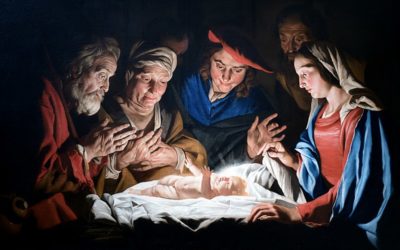Some figures in the scriptures and Church history are very well known, Joseph Smith and Oliver Cowdery being among them. Section 13 of the Doctrine and Covenants shows both these men in one of the best-known scenes from Church history: the restoration of the Aaronic Priesthood by the resurrected John the Baptist. Section 12, on the other hand, focuses on Joseph Knight Sr., someone who is less well known but whose efforts were important in the translation of the Book of Mormon and other events in Church history. His efforts highlight how all of us—not just the best known—can contribute to the building of God’s kingdom here on earth by doing what we can.
Doctrine and Covenants 12
The scriptures include well-known historical figures and many who are not. While focusing on the well-known people, we sometimes overlook the roles played by the supporting characters, the ones the Book of Mormon calls “no less serviceable” (Alma 48:19). Joseph Knight Sr., the recipient of section 12, was a former employer of Joseph Smith who provided help to Joseph and Oliver while they were translating the Book of Mormon. His help allowed the translation to go forward when it otherwise would have paused.
By doing our small part in the Church—fulfilling our responsibilities as family members and our callings and ministering to those around us—we too can contribute to the building of God’s kingdom on earth.
For more historical information on section 12, click here. For a short introduction to Joseph Knight, go click here. For a longer introduction on the Knight family and their important supporting role in Church history, go here.
You may also wish to read President Howard W. Hunter’s talk titled “No Less Serviceable.”
Doctrine and Covenants 13
As best we can tell, when Joseph and Oliver began translating the Book of Mormon in April 1829, they didn’t start with 1 Nephi. Joseph retained a little of what he and Martin translated (see last week’s lesson), and they continued from there to the end of the large plates before translating what we have today as 1 Nephi through Words of Mormon, books that were on the small plates.
By the middle of May, they had already begun translating 3 Nephi and encountered the appearance of Jesus Christ to the people of the New World. In 3 Nephi 11, the Savior calls Nephi and others from the multitude, giving them power to baptize and instructing them how to perform the ordinance by immersion (3 Nephi 11:18-28).
Naturally, Joseph and Oliver wanted to be baptized. Joseph recounted, “We on a certain day went into the woods to pray and inquire of the Lord respecting baptism for the remission of sins, that we found mentioned in the translation of the plates. While we were thus employed, praying and calling upon the Lord, a messenger from heaven descended in a cloud of light.” (Joseph Smith—History 1:68)
The messenger introduced himself as John the Baptist and gave them authority to baptize. Joseph’s recollection of John’s words is found in section 13.
After giving them authority, John gave them further instructions. Joseph recalled:
“He said this Aaronic Priesthood had not the power of laying on hands for the gift of the Holy Ghost, but that this should be conferred on us hereafter; and he commanded us to go and be baptized, and gave us directions that I should baptize Oliver Cowdery, and that afterwards he should baptize me.
“Accordingly we went and were baptized. I baptized him first, and afterwards he baptized me—after which I laid my hands upon his head and ordained him to the Aaronic Priesthood, and afterwards he laid his hands on me and ordained me to the same Priesthood—for so we were commanded.” (Joseph Smith—History 1:70-71)
In a pattern of unselfish leadership, Joseph baptized Oliver before he was baptized and ordained Oliver before Oliver baptized him. Thus, Oliver Cowdery was the first person baptized and ordained in this dispensation.
Over the years, artists have mistakenly assumed that John visited Joseph and Oliver on the banks of the Susquehanna River where they were baptized. Recent historical analysis, however, reveals that the angel appeared to them in the privacy of a grove a considerable distance from the river. They then “went and were baptized” ((Joseph Smith—History 1:71) down in the river.
In 2015, President Russell M. Nelson dedicated the priesthood restoration site in Harmony, Pennsylvania, after significant upgrades to the site, including more accurate portrayals of what really happened. To see the site, as well as accurate depictions of the events, click here.
For additional information on the bestowal of priesthood authority, read the first few pages of Saints, volume 1, chapter 7. For a more advanced discussion, see here. The earliest text of section 13 comes from Joseph Smith’s history.
For a series of recent podcasts from the Joseph Smith Papers on the restoration of the priesthood, click here.
(Photo credit for image at top of post: Detail from 1898 print titled The youthful prophet, Joseph Smith, Jr., and Oliver Cowdery, receiving the Aaronic priesthood under the hands of John the Baptist, May 15,1829, public domain, copied from https://www.loc.gov/resource/pga.03080/ [accessed Feb. 6, 2021].)



